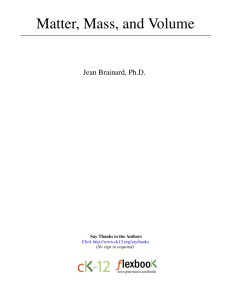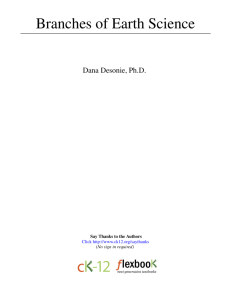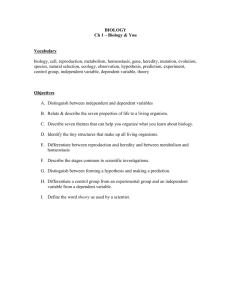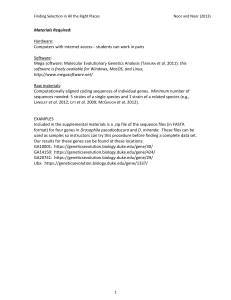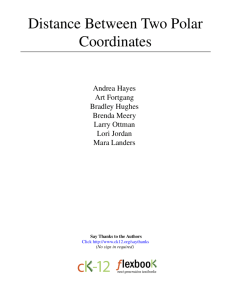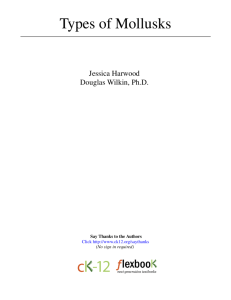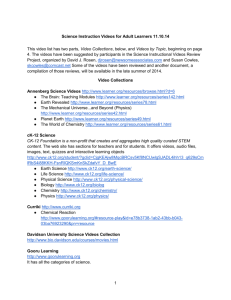1 Principles of Biology
advertisement
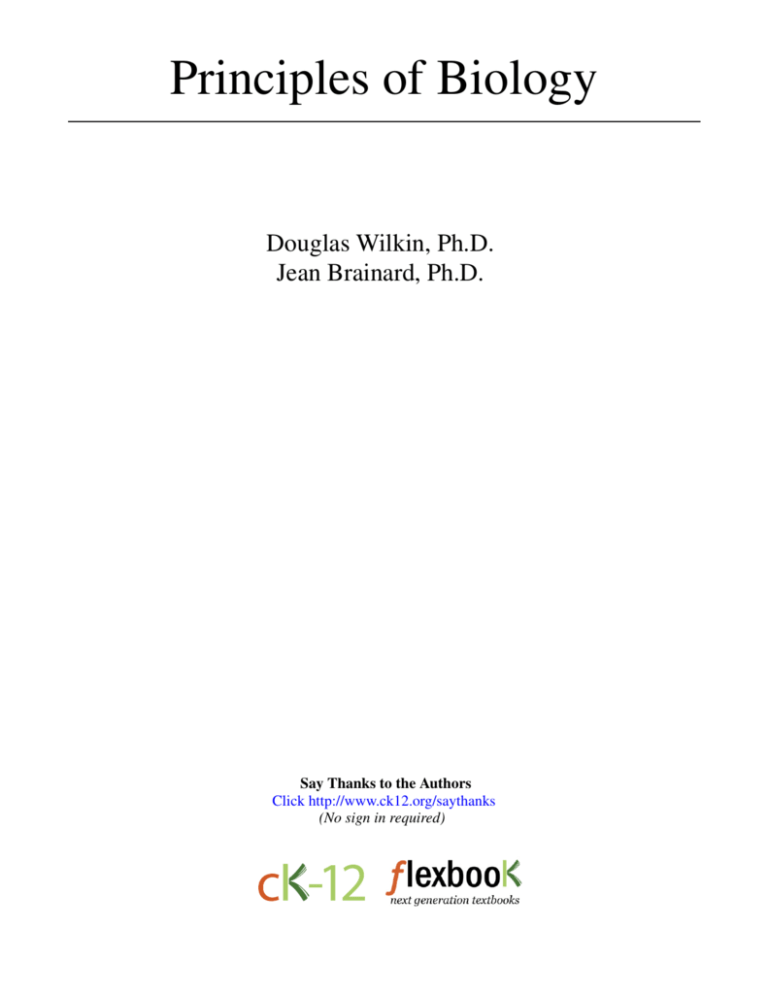
Principles of Biology Douglas Wilkin, Ph.D. Jean Brainard, Ph.D. Say Thanks to the Authors Click http://www.ck12.org/saythanks (No sign in required) To access a customizable version of this book, as well as other interactive content, visit www.ck12.org CK-12 Foundation is a non-profit organization with a mission to reduce the cost of textbook materials for the K-12 market both in the U.S. and worldwide. Using an open-content, web-based collaborative model termed the FlexBook®, CK-12 intends to pioneer the generation and distribution of high-quality educational content that will serve both as core text as well as provide an adaptive environment for learning, powered through the FlexBook Platform®. Copyright © 2014 CK-12 Foundation, www.ck12.org The names “CK-12” and “CK12” and associated logos and the terms “FlexBook®” and “FlexBook Platform®” (collectively “CK-12 Marks”) are trademarks and service marks of CK-12 Foundation and are protected by federal, state, and international laws. Any form of reproduction of this book in any format or medium, in whole or in sections must include the referral attribution link http://www.ck12.org/saythanks (placed in a visible location) in addition to the following terms. Except as otherwise noted, all CK-12 Content (including CK-12 Curriculum Material) is made available to Users in accordance with the Creative Commons Attribution-Non-Commercial 3.0 Unported (CC BY-NC 3.0) License (http://creativecommons.org/ licenses/by-nc/3.0/), as amended and updated by Creative Commons from time to time (the “CC License”), which is incorporated herein by this reference. Complete terms can be found at http://www.ck12.org/terms. Printed: April 28, 2014 AUTHORS Douglas Wilkin, Ph.D. Jean Brainard, Ph.D. www.ck12.org C HAPTER Chapter 1. Principles of Biology 1 Principles of Biology • List and describe the four unifying principles of biology. Reproduction, homeostasis, evolution, metabolism, heredity. What controls characteristics of life? Characteristics of life are controlled by genes, which are passed from parents to offspring, and are located on chromosomes, like the one shown here, that are found in every cell. The gene theory is one of the unifying principles of biology. Unifying Principles of Biology Four unifying principles form the basis of biology. Whether biologists are interested in ancient life, the life of bacteria, or how humans could live on the moon, they base their overall understanding of biology on these four principles: 1. 2. 3. 4. cell theory gene theory homeostasis evolution The Cell Theory According to the cell theory, all living things are made up of cells, and living cells always come from other living cells. In fact, each living thing begins life as a single cell. Some living things, such as bacteria, remain single-celled. Other living things, including plants and animals, grow and develop into many cells. Your own body is made up of an amazing 100 trillion cells! But even you—like all other living things—began life as a single cell. 1 www.ck12.org FIGURE 1.1 Tiny diatoms and whale sharks are all made of cells. Diatoms are about 20 µm in diameter and are made up of one cell, whereas whale sharks can measure up to 12 meters in length and are made up of billions of cells. The Gene Theory The gene theory is the idea that the characteristics of living organisms are controlled by genes, which are passed from parents to their offspring. A gene is a segment of DNA that has the instructions to encode a protein. Genes are located on larger structures, called chromosomes, that are found inside every cell. Chromosomes, in turn, contain large molecules known as DNA (deoxyribonucleic acid). Molecules of DNA are encoded with instructions that tell cells what to do. To see how this happens, click on the animation titled Journey into DNA at the following link: http ://www.pbs.org/wgbh/nova/genome/dna.html . Homeostasis Homeostasis, which is maintaining a stable internal environment or keeping things constant, is not just a characteristic of living things. It also applies to nature as a whole. Consider the concentration of oxygen in Earth’s atmosphere. Oxygen makes up 21% of the atmosphere, and this concentration is fairly constant. What keeps the concentration of oxygen constant? The answer is living things. Most living things need oxygen to survive, and when they breathe, they remove oxygen from the atmosphere. On the other hand, many living things, including plants, give off oxygen when they make food, and this adds oxygen to the atmosphere. The concentration of oxygen in the atmosphere is maintained mainly by the balance between these two processes. A quick overview of homeostasis can be viewed at http://www.youtube.com/watch?v=DFyt7FJn-UM . Evolution Evolution is a change in the characteristics of living things over time. Evolution occurs by a process called natural selection. In natural selection, some living things produce more offspring than others, so they pass more genes to the next generation than others do. Over many generations, this can lead to major changes in the characteristics of living things. Evolution explains how living things are changing today and how modern living things have descended from ancient life forms that no longer exist on Earth. As living things evolve, they generally become better suited for their environment. This is because they evolve adaptations. An adaptation is a characteristic that helps a living thing survive and reproduce in a given environment. Look at the mole in Figure 1.2. It has tentacles around its nose that it uses to sense things by touch. The mole lives underground in the soil, where it is always dark. However, by using its touch organ, it can detect even tiny food items in the soil in total darkness. The touch organ is an adaptation because it helps the mole survive in its dark, underground environment. Summary • The cell theory states that all living things are made up of cells, and living cells always come from other living cells. • The gene theory states that the characteristics of living things are controlled by genes. • Homeostasis is maintaining a constant environment. 2 www.ck12.org Chapter 1. Principles of Biology FIGURE 1.2 This mole uses its star-shaped nose organ to sense food by touch in the dark. The mole’s very large front claws are also an adaptation for its life in the soil. Can you explain why? • Evolution is a change in species over time. Making Connections MEDIA Click image to the left for more content. Practice Use this resource to answer the questions that follow. • http://www.hippocampus.org/Biology → Non-Majors Biology → Search: Cell Theory 1. 2. 3. 4. 5. What is the cell theory? What is one main tenet of the cell theory? Describe the findings of Schwann, Schleiden, and Virchow. What findings led to the refinement of the cell theory? What is one main difference between the classic cell theory and the modern cell theory? Review 1. Identify four unifying principles of modern biology. 2. How is gene theory related to the theory of evolution? 3. How are genes related to chromosomes? 3 www.ck12.org References 1. (a) Mary Ann Tiffany, San Diego State University; (b) Flickr:istolethetv. Diatoms and whale sharks are all made of cells. (a) CC-BY 2.5; (b) CC-BY 2.0 2. Flickr:gordonramsaysubmissions. A mole’s nose and claws are adaptations. CC BY 2.0 4


